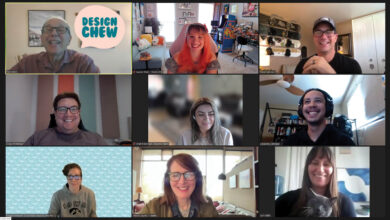
Tom Rumbaugh continues his embroidery costing series with insights on goal setting and understanding costs. Check out his tips on pricing worries and keeping perspective.
Break down your goals
Instead of focusing on a large, yearly sales goal, choose four or five actions you can do each day or each week.
Here are some examples:
- Make 20 outbound sales calls each day
- Attend two business networking functions a month
- Spend one hour a day learning something new for the first two months
- Research two potential new vendors each week, etc.
- Go visit one other shop each week looking for opportunities
- Watch apparel techniques and equipment info each week
Make sure to block out time on your calendar for family or your mate each week. Having them on board with your goals and getting their input can help you feel confident that your goals and your pricing structures line up with their expectations.
Let’s face it, we all have blind spots, and we need family, our mates, and our friends to point them out from time to time.
Business Tip: If you have never taken the time to write down your goals, now is the perfect time to get started.
These goals will inform your pricing decisions and help you decide which pricing models support your overall goals.
Understanding fixed and variable costs
Job costing is often the starting point of any pricing model. It’s unique for each business and depends on many different factors that apply specifically to the individual business.
Costs are classified into two broad categories, and it’s important to have some understanding of the differences when learning how to price embroidery.
Fixed costs: Fixed costs are any costs that do not change with an increase or decrease in the amount of the goods or services provided. These are expenses that an embroidery company must pay regardless if any business activity is conducted or any sale is made that month.
Typically, this includes things such as rent, utilities, lease payments, monthly maintenance payments, owner’s salaries, and other fixed overhead costs.
These fixed costs get tracked to each job based on the number of jobs expected for each month.
If your fixed costs for a specific month are $1,450 and your sales volume is $5,000, then your fixed costs would represent about 30 percent of your sales volume.
Imagine if you doubled your sales volume to $10,000. Now your fixed costs only add up to 15 percent of your sales volume. Doing this will leave a larger percentage (85 percent instead of 70 percent) for cost of goods and profits.
The bottom line is your profits go up by selling more each month while keeping your fixed costs the same. Higher sales volume leaves more money for higher profits!
Variable costs: Variable costs fluctuate with production volume. They typically depend upon how much you sell or prepare to sell and how many orders you receive that month.
Learning to calculate and classify the variable costs is one of the more tedious things to get a handle on. However, keep the task in perspective. It is nothing more than gathering all the costs that CHANGE with each job.
Understanding wholesale costs
The wholesale cost is what embroidery businesses typically pay for blank garments, thread, backing, bobbins, etc.
Wholesaling is one of the steps in a typical supply chain, which includes manufacturers, distributors (blank garments) and retailers (most embroidery shops).
The huge apparel distributors typically have warehouses where they store hundreds of thousands of garments which are blank and ready to be delivered.
Business Tip: As a new startup or existing embroidery business owner, you can often show the wholesale company a copy of the embroidery machine invoice and be set up with a wholesale account.
Having purchased a commercial monogramming machine is a good indicator to wholesalers that you mean business. They will give you a better sense of how to price embroidery work if you know how to ask.



